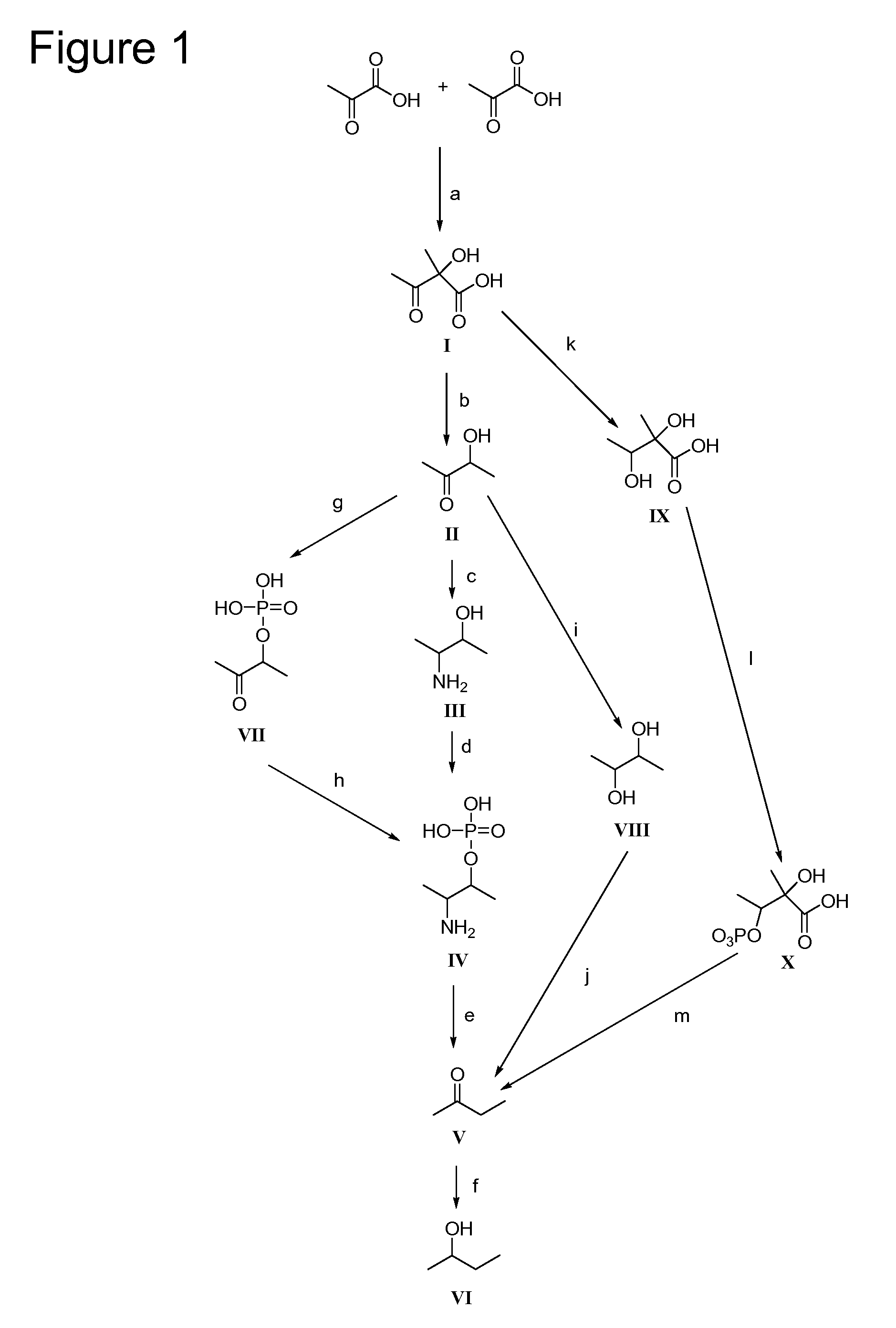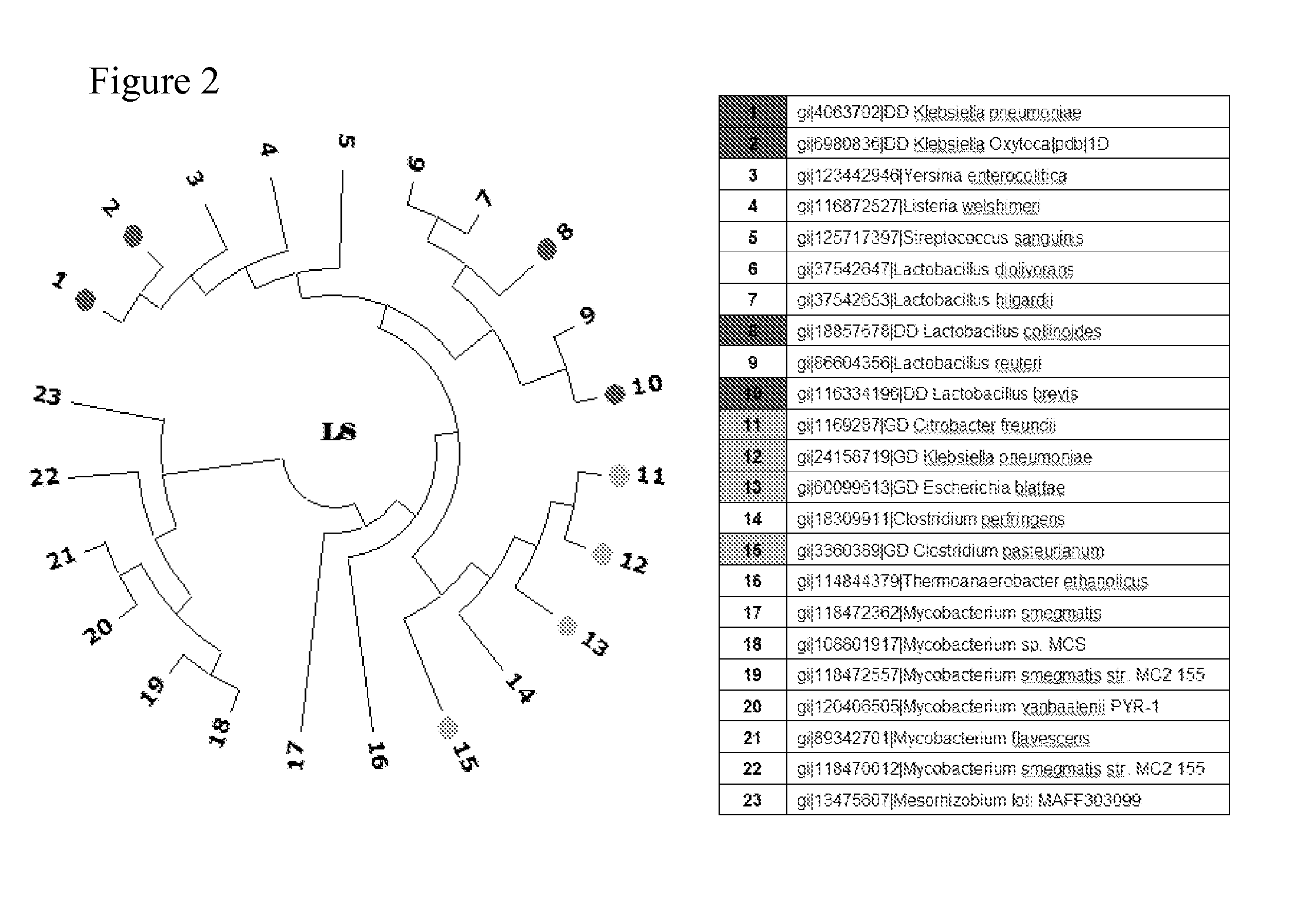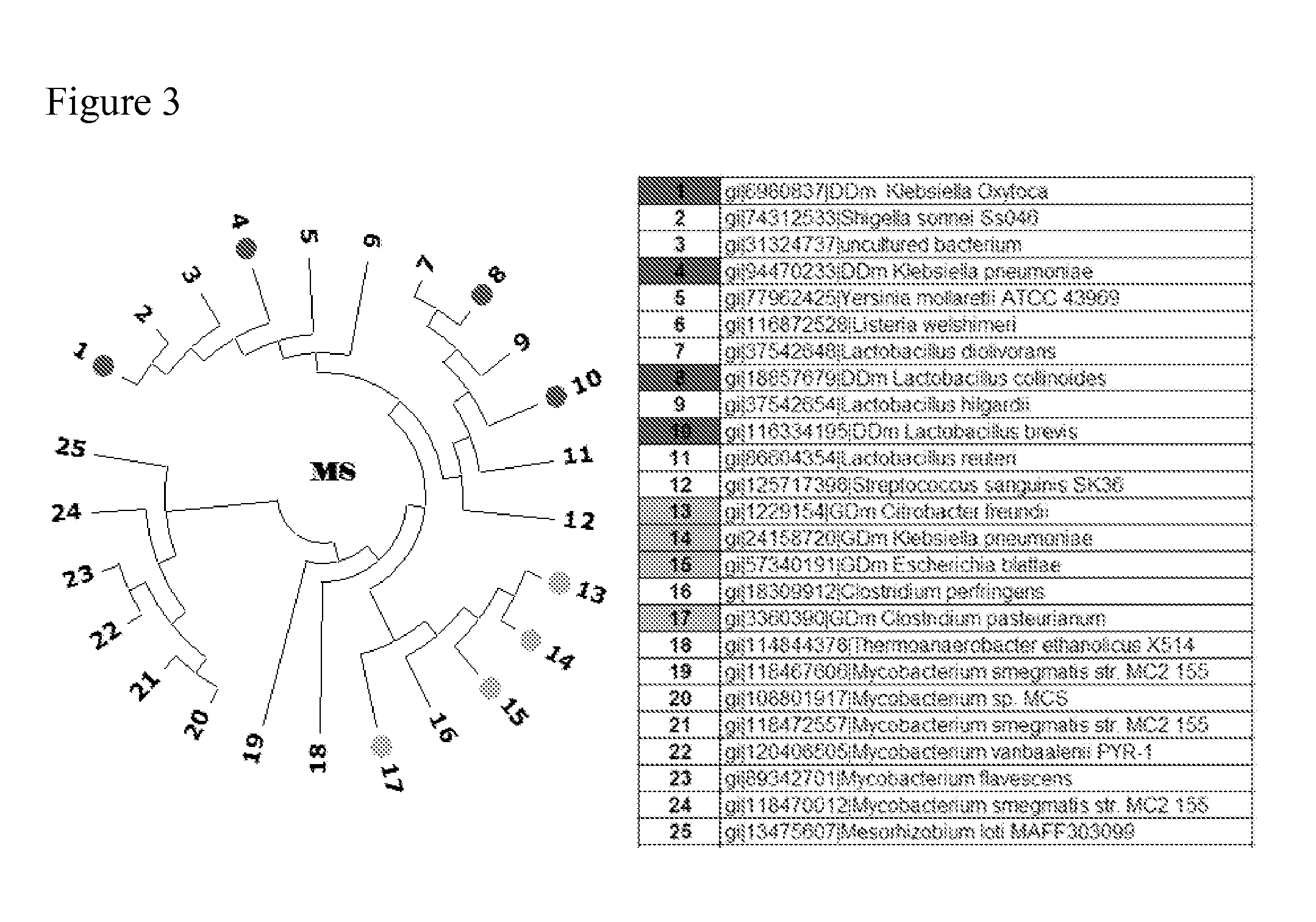Fermentive production of four carbon alcohols
a fermentation and alcohol technology, applied in the field of industrial microbiology and the production of alcohols, can solve the problems of petrochemical starting materials that are generally expensive, not environmentally friendly, and no reports of a recombinant microorganism designed to produce 2-butanol
- Summary
- Abstract
- Description
- Claims
- Application Information
AI Technical Summary
Benefits of technology
Problems solved by technology
Method used
Image
Examples
example 1
Cloning and Expression of Acetolactate Synthase
[0251] The purpose of this Example was to clone and express in E. coli the budB gene that encodes the enzyme acetolactate synthase. The budB gene was amplified from Klebsiella pneumoniae strain ATCC 25955 genomic DNA using PCR.
[0252] The budB sequence which encodes acetolactate synthase was amplified from Klebsiella pneumoniae (ATCC 25955) genomic DNA by PCR using the primer pair B1 (SEQ ID NO:15) and B2 (SEQ ID NO:16). Other PCR amplification reagents (e.g. Kod HiFi DNA Polymerase (Novagen Inc., Madison, Wis.; catalog no. 71805-3)) were supplied in manufacturers' kits and used according to the manufacturer's protocol. Klebsiella pneumoniae genomic DNA was prepared using the Gentra Puregene Puregene kit (Gentra Systems, Inc., Minneapolis, Minn.; catalog number D-5000A). Amplification was carried out in a DNA Thermocycler GeneAmp 9700 (PE Applied Biosystems, Foster city, Calif.). The nucleotide sequence of the open reading frame (ORF) ...
example 2
Cloning and Expression of Acetolactate Decarboxylase
[0256] The purpose of this Example was to clone and express in E. coli the budA gene that encodes the enzyme acetolactate decarboxylase. The budA gene was amplified from Klebsiella pneumoniae strain ATCC 25955 genomic DNA using PCR.
[0257] The budA sequence which encodes acetolactate decarboxylase, was cloned in the same manner as described for budB in Example 1, except that the primers used for PCR amplification were B3 (SEQ ID NO:17) and B4 (SEQ ID NO:18). The nucleotide sequence of the open reading frame (ORF) and the predicted amino acid sequence of the enzyme are given as SEQ ID NO:1 and SEQ ID NO:2, respectively. The resulting plasmid was named pENTRSDD-TOPObudA.
[0258] Acetolactate decarboxylase activity in the cell free extracts is measured using the method described by Bauerle et al., supra.
example 3 (
Prophetic)
Cloning and Expression of Butanediol Dehydrogenase
[0259] The purpose of this prophetic Example is to describe how to clone and express in E. coli the budC gene that encodes the enzyme butanediol dehydrogenase. The budC gene is amplified from Klebsiella pneumoniae strain IAM1063 genomic DNA using PCR.
[0260] The budC sequence encoding butanediol dehydrogenase is cloned and expressed in the same manner as described for budA in Example 1, except that the primers used for PCR amplification are B5 (SEQ ID NO:19) and B6 (SEQ ID NO:20) and the genomic template DNA is from Klebsiella. pneumoniae IAM1063 (which is obtained from the Institute of Applied Microbiology Culture Collection, Tokyo, Japan). Klebsiella pneumoniae IAM1063 genomic DNA is prepared using the Gentra Puregene Puregene kit (Gentra Systems, Inc., Minneapolis, Minn.; catalog number D-5000A). The nucleotide sequence of the open reading frame (ORF) and the predicted amino acid sequence of the enzyme are given as SEQ ...
PUM
| Property | Measurement | Unit |
|---|---|---|
| temperature | aaaaa | aaaaa |
| temperature | aaaaa | aaaaa |
| temperature | aaaaa | aaaaa |
Abstract
Description
Claims
Application Information
 Login to View More
Login to View More - R&D
- Intellectual Property
- Life Sciences
- Materials
- Tech Scout
- Unparalleled Data Quality
- Higher Quality Content
- 60% Fewer Hallucinations
Browse by: Latest US Patents, China's latest patents, Technical Efficacy Thesaurus, Application Domain, Technology Topic, Popular Technical Reports.
© 2025 PatSnap. All rights reserved.Legal|Privacy policy|Modern Slavery Act Transparency Statement|Sitemap|About US| Contact US: help@patsnap.com



